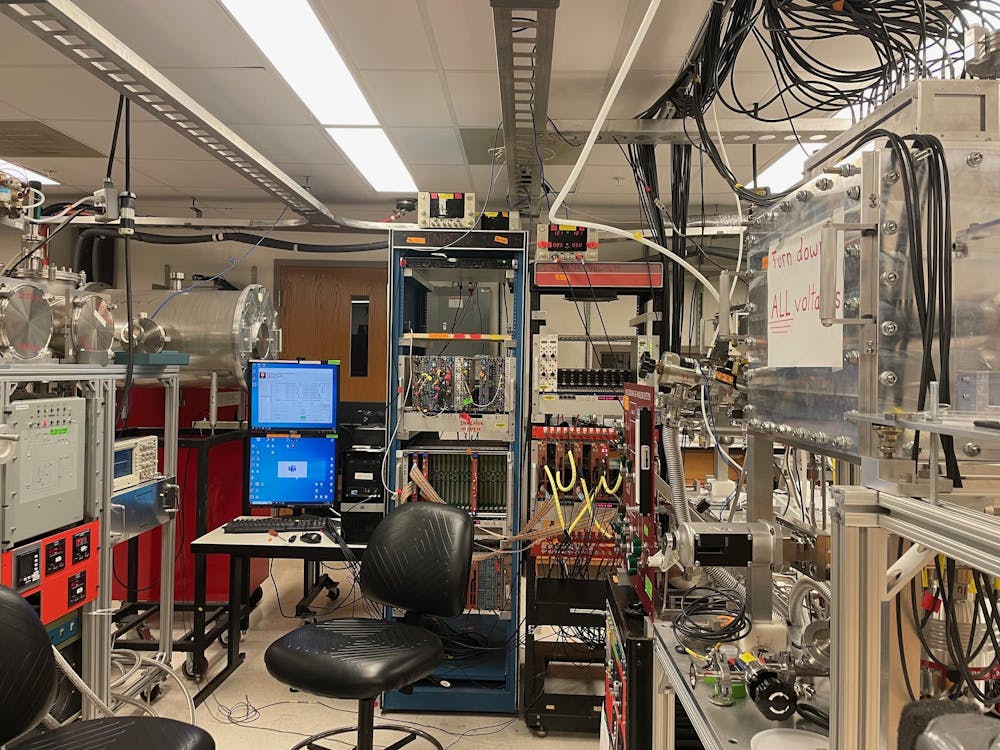Romualdo deSouza thought of the idea while lecturing a nuclear chemistry class. The three-decade IU professor had figured out a way to create a clear picture of fusion, the technique by which stars seed the universe with elements.
In this project, he studies the fusion of oxygen isotopes — atoms with different numbers of neutrons in their nuclei — with carbon.
His research has been going on for about five years and looking forward to another decade, he said. It has even gained a highlight from the U.S. Department of Energy, which helps fund the projects, in July. The agency described deSouza’s research as “the most comprehensive computation to-date of fusion reaction processes.”
The main benefit, he said, is clearing mysteries around fusion — when two nuclei combine. The research could also have practical benefits too, such as improving the synthesis of heavier elements in laboratories.
“But the more fundamental outcome is simply this better understanding of the fusion process,” deSouza said.
As many scientists have said, learning about the universe remains at the heart of their work.
deSouza is an experimentalist. His lab is filled with gadgets, computers and machines. Sticky blue welcome mats strip the dirt from the soles of entering shoes. The research is only possible through months of calculations via supercomputers.
One method of experiment, deSouza said, is using a thin target. The researchers shoot a beam of oxygen they’re trying to fuse at a thin foil of carbon. Most of the time the beam passes right through the foil with no fusion reactions because atoms are mostly empty space, he said.
One can imagine the atom like a microscopic solar system, deSouza said. While the sun, akin to a nucleus, is huge, the vast majority is taken up by absolutely nothing.
When the nuclei do fuse, they create silicon, a heavier element. That silicon gets excited, he said, leading it to evaporate protons, neutrons and alpha particles — two protons and neutrons bound together. The evaporation’s residue is then knocked away from the oxygen beam’s direction. Researchers will then capture the residue’s information, giving them the data they need.
The more recent technique the group uses is an active thick target experiment, which involves shooting the beam into gas. Usually, he said this will just ionize the gas.
“If we suddenly see an increase in the energy deposition,” deSouza said, “we know our reaction has occurred.”
What they’re measuring is the probability of fusion as a function of the energy of collision. And what they found, he said, tells them about the interaction between the two nuclei.
He said nuclei can be described as “little droplets,” with both quantum and physical properties. Both influence the action of fusion.
deSouza compared the dynamics of fusion to planes traversing mountains. Commercial jets flying high above them face no problems. Smaller planes may need to weave through its structure. But there are quantum effects too. The plane could hit a barrier emanating above the mountains, or it could tunnel through them.
Much of the probability of fusion depends on the angular momentum of the collision. Reactions that don’t occur head-on create rotation.
Michigan State University theorist Kyle Godbey, involved with deSouza’s research and publications, said that rotation creates a sort of barrier like a carnival ride that throws you into the wall. This barrier is quantized, he said, meaning it can only accept certain values of angular momentum.
Godbey said this produces an odd result: rather than a straight curve of probability, the line is zig zagged. This, he said, is both profound for understanding the behavior of these nuclei, and really, really weird.
“That's one of the reasons why a lot of people get into physics,” he said. “There were so many weird things that were true.”
That’s how he got interested in physics when he was younger, Godbey said.
deSouza said his idea came to him while teaching; he believes that underscores the importance of educational institutions like IU.
“Science is an ongoing endeavor, and it's not something that's just in a book that was written by who knows who, passed down for 50 or 100 or whatever years,” he said. “It's something that you actually did and are doing today. And then you can get excited about that.”
He said he is still receiving exciting data from collaborators, even up to this week. His research, too, is ongoing.



